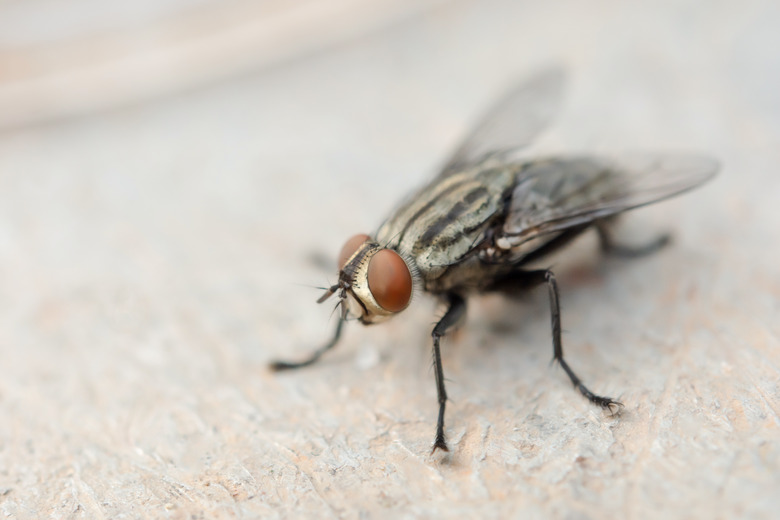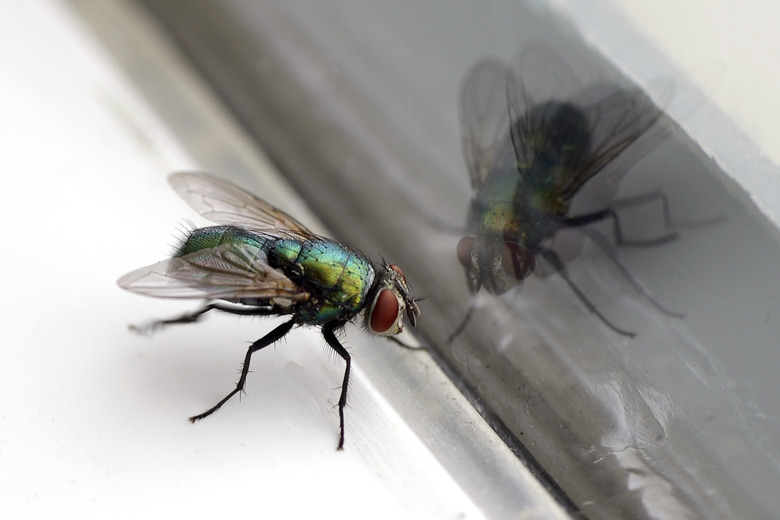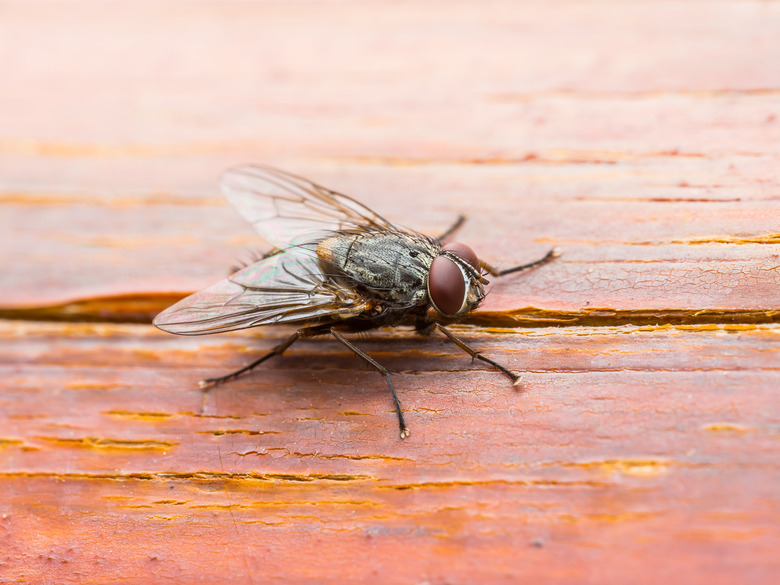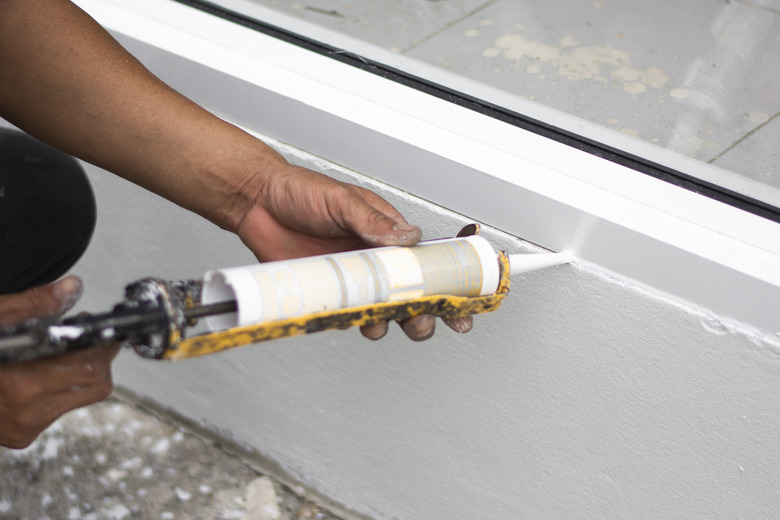How To Get Rid Of Flies In The House
We may receive a commission on purchases made from links.
There's nothing like buzzing, swarming houseflies to put a damper on your picnic or dinner out on the patio. Though they're not stinging or particularly loud insects, houseflies are actually much more than a nuisance. Along with cockroaches, the common housefly is one of the most serious spreaders of disease-causing bacteria and other pathogens. At the moment it lands on a plate of fresh, steaming vegetables at your dinner table, a housefly may have just been feeding on waste in your cat's litter box. Its hairy little body may carry up to 1 million bacteria, and that single fly is capable of spreading some of the most formidable diseases around, including cholera, typhoid, and E. coli infection.
Fly control is not just a matter of eliminating a nuisance but of protecting your family and guests against the possibility of serious illness.
What Do Flies Look Like?
What Do Flies Look Like?
- Species name: Musca domestica
Physical characteristics: Adults are dull gray and about 1/4 inch long with four dark stripes on the middle of the body. Larvae (maggots) are legless creamy-white worms about 1/2 inch long. - Wings or wingless? Adult flies have one pair of translucent wings.
- Life cycle and appearance: There are four distinct stages of the common housefly: adult fly, the familiar insect with bulbous eyes and transparent wings; the egg, a small, elongated oval that is laid when the adult flies are just hours old; the larvae (maggots), about 1/2 inch long and creamy white in color, feeding for about three to six days before the next stage; and the pupae, appearing as the maggots encase themselves in hard shells. Within three to seven days, the pupae hatch into adult flies to begin a new cycle.
How to Get Rid of Flies
Swatting
If your fly infestation involves a random handful of flies buzzing around lights or TV screens in the evening, there is nothing wrong with the old-fashioned, tried and true method of killing them with a fly swatter. It can take some practice to learn how to slowly approach a sitting fly and then suddenly flick your wrist to hit the insect with your swatter, but it's probably the best method for an occasional random housefly.
Those random flies are getting into your home somewhere, so look for damaged window screens or screen doors that are failing to close. This is probably where those renegade flies are entering your home.
Traps
In warm weather, houseflies are an unavoidable fact of life, and during these times, the best approach is offered by a variety of trapping devices you can use to catch flies. These range from simple sticky traps to electronic devices that use lights to lure the insects and then ensnare them with disposable sticky papers. These traps are ideal for indoor use. Bug zappers that kill insects by electrocuting them have a dramatic appeal, but they aren't very good for indoor use because of the constant audible crackling they produce, and bug zappers set outdoors tend to attract more bugs than they kill.
An effective DIY trap can be made with vinegar and dish soap. Mix about 1 inch of apple cider vinegar with several drops of dish soap in a glass jar. Cover the top of the jar with plastic wrap held in place with a rubber band. Pierce the plastic with several small holes. This homemade trap will lure in flies, which will then drown in the vinegar/soap mixture. Several of these traps set around your house can be remarkably effective at reducing your indoor fly problem.
The same principle is used with a variety of commercial traps that are prebaited with a sugary substance. Simply add water, hang up the traps, and wait for flies to get trapped. These traps are normally best for outdoor use; hanging them up around doors and windows can deter flies from entering your home.
Some commercial traps are simple devices made with screen material with a funnel shape at one end. When you bait them with fruit or meat, flies enter the trap through the funnel and are trapped inside. These too are best used outdoors around windows and doors to trap flies before they can enter your home. Fly traps filled with pieces of rotting fruit or meat don't make for appealing indoor decor.
Spray Pesticides
Pesticides, though highly touted by manufacturers, are not very effective at controlling flies when used alone since you must hit them directly with the spray. Spray pesticides are best used in combination with other control methods, especially trapping and elimination of food sources and breeding sites.
Pyrethrin-based pesticides, however, are the best choice for spraying flies. These pesticides are composed of a natural substance derived from chrysanthemum flowers. They are fairly safe for use around humans and pets, though be aware that pyrethrins are toxic to fish and other aquatic life. Never use them in a manner where they can run off into water supplies.
Houseflies reproduce rapidly and can quickly develop resistance to most pesticides, so don't count on pesticides to be the primary means of housefly control. They can be useful, for example, if you are trying to eliminate flies from your home prior to entertaining guests.
When to Hire a Pro
When to Hire a Pro
When a housefly infestation is severe and you are unable to control it in any other way, you may need to call a professional pest control service. In many cases, the ongoing fly infestation can be traced to a decaying rodent or a small animal corpse inside walls or in a crawl space. A professional exterminator has tools for both locating the source of the decay and removing it. The exterminator may also give you advice on how to manage trash cans and other tips for eliminating sources of food and breeding areas that are causing your ongoing fly infestation. For modest infestations, though, you can be entirely effective at eliminating houseflies yourself.
Getting Rid of Flies Naturally
Getting Rid of Flies Naturally
In addition to the homemade vinegar and dish soap trap, there are a variety of natural repellants you can try:
- A mixture of cayenne pepper and water wiped over countertops, tables, and window and door frames is repulsive to flies but odorless to humans.
- Marigolds as well as herbs such as basil, rosemary, and lavender planted outside your windows and doors will repel many flies and other insects.
- Keep the ground around your home free of moist plant waste material. Moisture is necessary for the egg and maggot stage of the fly's life cycle, and the drier the environment, the fewer flies you will experience.
How Quickly Can You Get Rid of Flies?
How Quickly Can You Get Rid of Flies?
Even a severe indoor fly infestation can be eliminated in a few days through a combination of methods. Most flies are entering your home through torn screens or gaps around windows and doors, and once these entry points are sealed, it's a simple matter of trapping or swatting the remaining indoor flies, which can be done in a couple of days or less.
How Flies Get in Your House
How Flies Get in Your House
Indoor fly infestations usually originate because adult flies are gaining access through missing or damaged window and door screens, usually in the hot summer months when they seek moist environments for feeding. Indoor breeding is fairly rare unless a home's hygiene is poor, such as if pet litter boxes are left unattended for long periods, if garbage cans are overflowing with moist waste, or if sinks are constantly filled with dirty dishes.
Flies can be active and reproduce in any warm weather but are most prevalent in the summer. In 60-degree-Fahrenheit weather, it requires about 45 days for the fly to go through all four life cycles; at 95 degrees, it takes only about seven days. Adult flies live, breed, and lay eggs for about three weeks. In cooler climates, common houseflies largely disappear in the winter, though other types of smaller flies, such as drain flies or fungus gnats, may persist.
How to Prevent Flies
How to Prevent Flies
The best prevention against housefly infestations is a combination of two approaches: deny the flies entry to your home and maintain excellent hygiene that denies flies the food they crave.
- Make sure all windows and storm doors have functional and undamaged insect screens.
- During the hottest days of summer, cool your home with air conditioners rather than open windows and doors. Limiting in/out traffic will minimize the opportunities for flies to enter through open doors.
- Air-seal your home to close gaps in foundations and around pipes and service wires entering the home.
- Get rid of (or seal) all sources of decaying plant and animal waste in and around the home. Make sure indoor garbage containers have tightly sealing lids, and take out the trash regularly.
- Make sure recyclables are rinsed and dried.
- Clean up after pets regularly, especially indoor litter boxes and fecal droppings in the yard.
- Keep compost heaps well away from the house, ideally in sealed bins.
- Store all foods in airtight containers and never leave dirty dishes sitting on a countertop.
- Turn off outdoor lights at night since they will attract flies and other insects.
- If you have problems with mice or rats, trap them instead of using rodenticide poisons since rodent corpses will attract flies.
Do Flies Spread Disease?
Do Flies Spread Disease?
Houseflies as well as other fly species are among the most serious of all disease-carrying insects because they feed with equal enthusiasm on sewage and rotting material and on human foods. The fly that lands on your mashed potatoes may have come directly from a manure pile.
The common housefly and related fly species are primary vectors for diseases such as dysentery, typhoid, cholera, eye infections like trachoma and epidemic conjunctivitis, poliomyelitis, and skin infections like yaws and leprosy.




